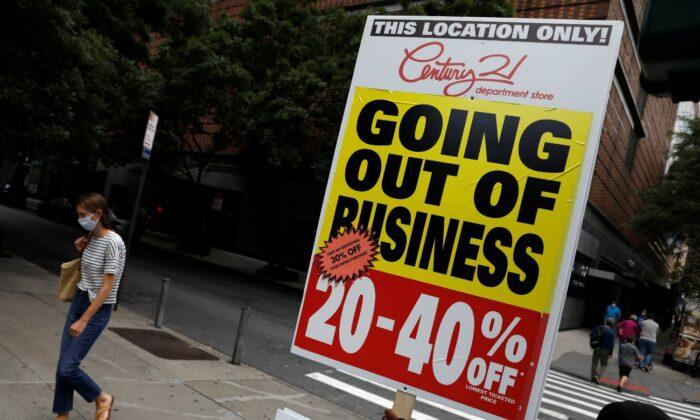The study found that every sector, except for financial institutions, posted a higher median market signal—a one-year probability of default score by the end of the April-to-June period—compared with the first quarter.
Health care topped the list at 7.3 percent, up from 4.6 percent. Communication services ranked second, climbing to 4.9 percent from 3.2 percent. Consumer discretionary inched higher, to 3.8 percent from 2.5 percent. Information technology and consumer staples rounded out the top five, at 2.7 percent and 1.7 percent, respectively.
S&P Global Market Intelligence data indicated that the odds of a default in the financials sector eased to 0.2 percent, from 0.3 percent during the January–March period.
The utilities market was at the bottom of the list at 0.2 percent.
When assessing default risks by industry, the report identified health care facilities, health care technology, advertising, broadcasting, and health care services as the most vulnerable. The data highlighted that the least vulnerable were asset management and custody banks, multi-utilities, electric utilities, railroads, and water utilities.
Will Default Risks Intensify?
During the 12-month period ended March 31, bankruptcy filings tumbled 16.5 percent, according to data published by the Administrative Office of the U.S. Courts. The March 2022 annual bankruptcy filings totaled 395,373, compared with 473,349 cases the previous year.It had been anticipated that low default rates would rise amid rampant price inflation and slowing economic growth. At the same time, according to George Curtis, a portfolio manager at TwentyFour Asset Management, the default rate will continue to be lower compared with previous economic cycles.
“Defaults will take time to materialize as high inflation and slower economic growth adversely affects revenue and margins of speculative-grade issuers that extended maturities and boosted liquidity during the pandemic,” he said.
The industrial sector, which includes aerospace and defense, construction and engineering, and trucking, has witnessed dozens of bankruptcies. Some of the firms included are MD Helicopters, Guildworks, Scungio Borst & Associates, and Fore Machine.

The 90-year-old company had previously averted bankruptcy in 2020 by persuading corporate bondholders to extend its maturing debt. But with enormous levels of debt and a plethora of supply chain challenges, it became too much to handle for Revlon.
In October 2021, the company maintained about $25 billion in assets under management (AUM). That number was cut to $11.8 billion in May during the crash in crypto prices. Celsius also possessed $8 billion in client loans. Today, it has roughly $167 million “in cash on hand” to proffer “ample liquidity” amid its restructuring process.
“The super hard part for a car company is how to get revenue above costs so you don’t go bankrupt,” he said. “A car company is desperately trying to go bankrupt at any given time.”
“The past two years have been an absolute nightmare of supply chain interruptions, one thing after another,” he added. “We’re not out of it yet. That’s overwhelmingly our concern: how do we keep the factories operating so we can pay people and not go bankrupt?”
Musk noted that the company’s factories in Austin, Texas, and Berlin “are gigantic money furnaces right now,” adding that “there’s a giant roaring sound which is the sound of money on fire,” as these facilities have lost billions of dollars.
Experts contend, however, that companies with strong balance sheets and cash flows can survive the economic turbulence.





